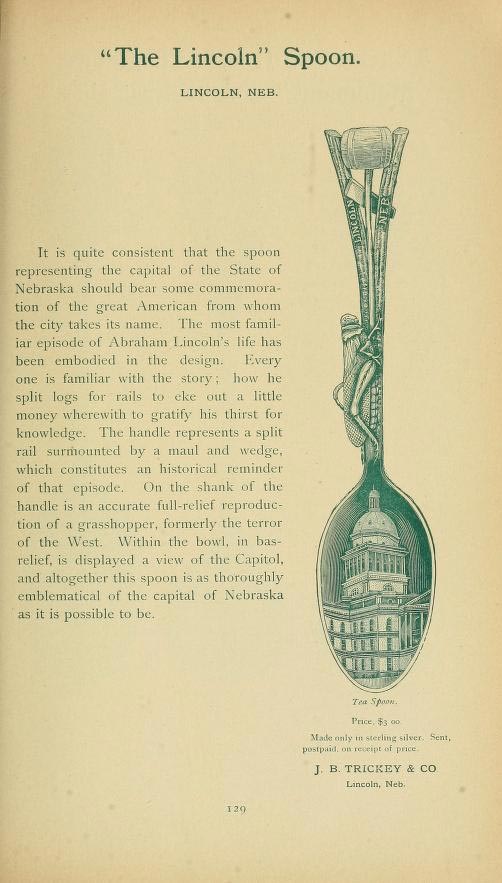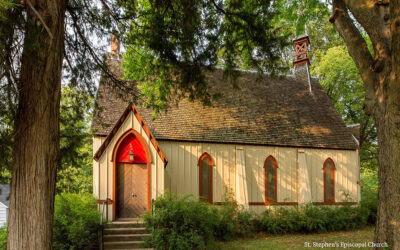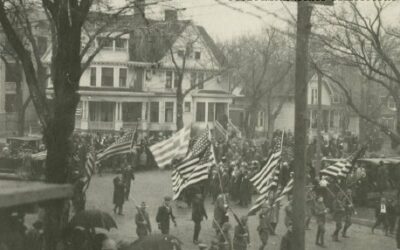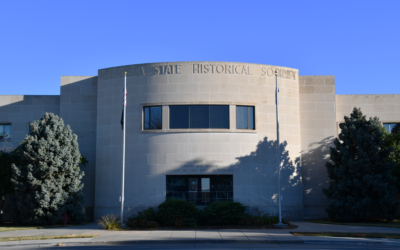Collecting souvenir spoons became a popular hobby for Americans in the late 1800s when this European fad swept the nation. Wealthy Americans visiting Europe brought home these mementos marked with the names of foreign cities and famous landmarks they had visited. The first souvenir spoon produced in the United States, in Washington, D.C., featured a profile of George Washington and was created to mark the centennial of his presidency. It was shortly followed by the Martha Washington spoon.
The Omaha Daily Bee on May 10, 1891, noted: “The season of summer traveling, so near at hand, will give a new impetus to the spoon fad. So great has been the demand the past season for souvenir spoons that all the larger cities of the United States, as well as every city and town in Europe, with but few exceptions, manufacture a spoon characteristic of the place or of some object of peculiar interest to the people of that place.
“While in many places the spoons are found in tea sizes only, a number of the more extensive shops furnish them in orange, sugar, coffee and tea sizes. The souvenir spoon of the District of Columbia comprises several designs. The George Washington has a medallion of the father of the country stamped in the bowl or on the top of the handle, the remainder of the spoon being perfectly plain. The Martha Washington is identical. The likenesses in both cases are said to be exact, and it is the favorite spoon with nearly all collectors.”
Nebraska cities were not slow to capitalize on the new fad. The Bee noted: “The Omaha spoon has only appeared in one style as yet, having engraved on the handle a picture of THE BEE building, but a number of jewelers are planning surprises for the fall trade.” George B. James Jr., in Souvenir Spoons, published in 1891, described a spoon from the city of Lincoln that incorporated both state and national symbols: “The handle represents a split rail surmounted by a maul and wedge [representing Lincoln’s namesake], . . . On the shank of the handle is an accurate full-relief reproduction of a grasshopper, formerly the terror of the West. Within the bowl in bas-relief, is displayed a view of the [Second State] Capitol, and altogether this spoon is as thoroughly emblematical of the capital of Nebraska as it is possible to be.”
Souvenir spoons at the height of their popularity were given as wedding and holiday gifts, displayed at art exhibitions, and even found their way into popular jokes. They were made to honor not only American cities and towns, but famous people and historical events. The World’s Columbian Exposition, held in 1893 in Chicago, gave the spoon collecting craze national exposure with a large number of commemorative spoons produced for the fair.
But like most fads, the spoon collecting craze did not last. By the outbreak of World War I the appetite for souvenir spoons had waned and by the end of the war it had almost disappeared. Today it is once again a niche hobby. Souvenir spoons at tourist attractions are a familiar sight, and hundreds of spoons change hands at auctions around the world.

A souvenir spoon from Lincoln, Nebraska, featured a grasshopper crawling up a split rail on the handle and the Second State Capitol on the bowl. From George B. James Jr., Souvenir Spoons (Boston, 1891).



